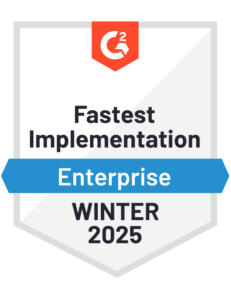6 Ways to Transform CFOs and CIOs Into a Dynamic Duo
White Paper
Share
Get the White Paper
Partnering to Drive Finance Digital Transformation
Amidst the ongoing economic strains, businesses around the world are confronting significant challenges in 2024. Among these challenges, a sense of workforce uncertainty looms large, exacerbated by heightened attrition and a dwindling talent pool. Meanwhile market dynamics are undergoing significant shifts, and with rising inflation rates and budget uncertainty, predictions become a daunting task. In response to these challenges, businesses are looking to new strategies for improving process efficiency and automation. However, the execution of such strategies is fraught with its own transformation challenges, adding layers of difficulty to an already intricate landscape.
It’s hardly unexpected that budget constraints and data-related issues are leading the charge as the top finance digital transformation challenges, especially considering the prevailing economic conditions and the persistent challenge with data management. However, what follows is equally telling: the primary hurdles revolve around the complex nature of organizational structures, processes, and the innate resistance to change. As their roles both continue to evolve, the CFO and CIO are positioned to overcome these transformational challenges together and set the standard of change management and process agility.
CFOs who co-pilot finance digital transformations with the CIO are more likely to find success. To facilitate this partnership effectively, adopting purpose-built tools designed for user empowerment is key to success. These tools can transform the CFO and CIO relationship into a dynamic duo, driving change and enhancing process agility. This enables both departments to concentrate on strategic initiatives that deliver substantial business value.
6 Ways for CFOs & CIOs to Drive Change Management
When CFOs and CIOs collaborate on financial transformation initiatives, it’s crucial to choose tools and technologies that align with both financial and technological goals.
- Self-Management Proficiency: Enable users to configure, manage, and make updates via a user-friendly interface without needing extensive technical expertise or constant support from IT resources.
- Optimized Workflows through Automation: Incorporate specific workflows and automation to eliminate routine, manual tasks and to optimize resources’ time to focus on high-risk items and tasks of significant importance.
- Seamless Integration: Built-in capabilities to integrate smoothly with other tools (including ERPs, banking systems, and other data sources) without requiring extensive coding changes or bespoke customization to your systems.
- Actionable Insights through Data: Utilize data analytics to transform the raw data from your solutions into meaningful insights that can drive strategic decision making. Dashboards and charts are at users’ fingertips, helping them visualize complex data points at a glance.
- Global Uniformity: Regardless of users’ location, software that remains in accordance with global standards in terms of functionality, processes, data handling, and compliance is key. It also provides a consistent user experience to ensure global consistency.
- Strengthened Data Assurance & Compliance: Providing robust security and compliance measures to protect data integrity ensures you are meeting regulatory requirements.
Download the full White Paper to better understand how these roles need to work together and dive deeper into these six change management strategies for finance digital transformation.






